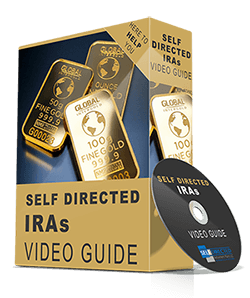A Roth solo 401(k) is a retirement savings plan designed for self-employed individuals, including sole proprietors and business owners with no full-time employees other than their spouse. This plan is ideal for self-employed individuals or those with a spouse who works in the business. It can also be an option for business partners, but each partner would need to have their own separate Roth solo 401(k).
If you think you’ll be in a lower tax bracket in retirement and want tax-free growth on your contributions, a Roth solo 401(k) could be a good fit.

What is a Roth solo 401(k)?
A Roth solo 401(k) is a form of solo 401(k) account that allows you to contribute after-tax funds. The best aspect is that these donations can grow tax-free and be taken tax-free when you retire. Of course, some conditions apply, such as being at least 59 ½ years old and having the account active for at least five years. However, with a solo Roth 401(k), you will never have to pay taxes on your contributions or gains again!
IRA vs 401k (+Roth Example) | Public Storage REITs | Self Storage
What are the Solo Roth 401(k) Contribution Limits in 2025?
The contribution limits for Roth solo 401(k) are the same as the pre-tax contribution limits for employees. It’s important to note that the combination requirements for employee contributions to a single 401(k) plan are also applicable to Roth IRA and traditional IRA contributions.
For 2024, the contribution limits for Roth solo 401(k)s are the same as Roth IRAs. In 2024, the maximum contribution is $23,000 with an additional $7,500 catch-up contribution allowed for those aged 50 or older.
Looking ahead to 2025, the maximum contribution amount increases to $23,500. Similarly, if the employee is 50 or older, they can make a catch-up payment of $7,500.
Remember, these contribution limits and catch-up payments apply specifically to solo Roth 401(k) plans.
Check out the following table to get further clarity on the deadlines and contribution limits for a Roth solo 401(k) in 2025 and 2024.
| Contribution Limit | 2024 | 2025 |
|---|---|---|
| Under age 50 | $23,000 | $23,500 |
| age 50+ | $7,500 | $7,500 |
| Contribution Deadline | December 31 | December 31 |
What are the Benefits of a Roth Solo 401 (K)?
Let’s explore the top eight benefits of having a Roth solo 401(k) and how it can help you secure a comfortable retirement.
- Tax-Free Investing
One of the most significant benefits of a Roth solo 401(k) is the ability to invest tax-free. This is because contributions to this plan are made after-tax income, unlike standard 401(k) contributions. This implies that when you take your retirement money, your contributions and returns will be tax-free, possibly saving you thousands of dollars in taxes. - High Contributions
Compared to other retirement plans, a Roth solo 401(k) allows you to make more significant contributions. Solo Roth 401k contribution limits for 2025 are up to $23,500, plus an extra $7,500 if you are 50 or older. These increased contribution limits enable you to maximize your retirement savings and accumulate a sizable nest egg for the future. - Unlimited Investment Opportunities
Did you know that with a Roth solo 401K, you can make almost any investment tax-free? And the best part is, once you turn 59 ½, you can enjoy the income from this plan without having to pay taxes. So whether you are interested in investing in real estate, tax liens, precious metals, or currencies, the possibilities are endless! - Loan Feature
The loan function is another appealing aspect of a solo Roth 401(k). You can borrow up to 50% of your account balance or $50,000, whichever is less, without incurring any tax penalties in times of financial necessity. This may be a helpful safety net, giving you access to cash in an emergency. - Two Funding Methods for a Solo Roth 401(k) Plan
When it comes to funding, there are 2 solo 401k Roth options you can choose from. The first method is to make personal contributions, as Roth. It means that this contribution has already been taxed and is not tax-deductible like a traditional plan. To do this, simply write “Roth” on the memo line of your contribution cheque.
The second method is to convert traditional funds already in the plan to Roth. This can be easily done without requiring a distribution. It’s called an “in-plan” conversion. - Offset the Cost of Your Plan With a Tax Deduction
Setting up and maintaining a retirement plan may come with administrative costs. However, a solo 401 (k) is a trust and you are the trustee. In most cases, this eliminates the need (and expense) of a TPA (Third Party Administrator). Contributions made as an employer have to be traditional (non-Roth) therefore are tax-deductible reducing the taxable income of the employer and, helping you save money while securing your future. - Cost-Effective Administration
A solo Roth 401(k) offers cost-effective administration compared to other retirement plans for self-employed individuals. The administrative responsibilities are relatively simple, and there are no annual filing requirements until your account value exceeds $250,000. This saves you time and money, allowing you to focus on growing your retirement savings. - Exemption From UBIT
Finally, a Roth solo 401(k) is not subject to Unrelated Business Income Tax (UBIT). This implies that if you opt to use leverage to invest in real estate, all income earned from the financed component will be exempt from UDFI tax. For real estate investors, this exemption might result in considerable tax savings. One important note: there is no limit to the amount of leverage which can be used.
Roth Solo 401k vs. Solo 401k
The main difference between these two lies in how your contributions are taxed. With a Roth solo 401k, your contributions are made with after-tax dollars, meaning you’ve already paid taxes on that money. This can be beneficial if you expect your tax rate to be higher in retirement. Even if you think you will not be in a higher tax bracket, this is a wonderful Estate Planning Tool – leaving your heirs a tax free account!
On the other hand, a traditional Solo 401k allows you to make pre-tax contributions, reducing your taxable income now but requiring you to pay taxes on your withdrawals in retirement. Ultimately, the choice between the two depends on your individual circumstances and financial goals.
Roth IRA vs. Roth Solo 401k
The Roth solo 401k stands out from the Roth IRA with advantages like participant loans and no income cap. Moreover, considering the potential rise in tax rates and the ability to generate tax-free returns, the solo Roth 401k emerges as an exceptional legal tax shelter. Even high-income individuals can contribute to it thanks to its higher contribution limits and the use of after tax contributions.
Furthermore, unlike the Roth IRA, the Roth solo 401k avoids the Urelated Business Income Tax (UBIT). As of 2023 Roth 401 (k) joins the Roth IRA – meaning neither plan forces RMD’s (Required Minimum Deductions).
Set up your solo Roth 401(k) hassle-free with our expert assistance! Call us today, and let us guide you through the process.
Need assistance organizing your finances?
FAQs
When can you take money out of a Roth solo 401(k)?
With a Roth solo 401(k), you can generally withdraw funds penalty-free after reaching the age of 59½ and the plan has been in place for five years.
Who should consider opening a Roth solo 401(k)?
Anyone self-employed or a small business owner with no full-time employees (except for a spouse or partner) may consider opening a Roth solo 401(k). It offers the opportunity for tax-free growth and flexibility in retirement savings.
Is a Solo 401(k) the same as a Roth 401(k)?
No, a Solo 401(k) and a Roth 401(k) are not the same. While both are retirement plans, a Solo 401(k) is a type of plan designed for self-employed individuals, whereas a Roth 401(k) is a specific type of account that allows you to contribute after-tax dollars.
Can I have both a Roth IRA and a Roth solo 401(k)?
Yes, you can have both a Roth IRA and a Roth solo 401(k). However, it’s essential to consider the contribution limits and eligibility requirements for each account. Consulting with a financial advisor may help you determine the best approach for your specific financial situation.
Are employer contributions to a solo Roth 401(k) taxable?
Employer contributions cannot be Roth. These funds enter the plan as traditional – however the next day you can implement an internal conversion to Roth. You will pay income tax on the converted amount but now all the gains wlll be Roth. If you do not effect an internal conversion, the gains made will be taxable when distribtuions begin.
Can I open a Roth 401(k) on my own?
You cannot open a Roth 401(k) on your own as an individual. A Roth 401(k) is a type of retirement plan that firms offer to their workers as part of their benefits package. To participate in a Roth 401(k), you must work for a firm that provides this retirement plan.
Do I need to open two Solo 401(k) plans if I also want to make Roth solo 401(k) contributions?
No, you do not need to open two separate Solo 401(k) plans. A Solo 401(k) can typically accommodate both traditional, Roth contributions and after tax contribuitons, allowing you to contribute to either all types of accounts within the same plan.
Got More Questions?



